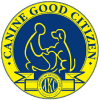how we train
Agression
Training
Bring back peace of mind
and minimize legal liability
Aggression exits in many different forms and from many different causes, so each case is individualized for the dog and family. All approaches rely on these training methods.
We offer specific programs for on leash aggression and aggression from resource guarding.
Most dogs exhibit aggression out of frustration that they cannot reach something they actually want (such as other dogs they want to play with, people they want to meet, or bikes they want to chase as prey). These dogs are taught that it is not acceptable for them to express that want through dramatic behaviors.
Other dogs exhibit aggression out of fear, and believe they have survived thus far because of the way they react to things they perceive to be life threatening. These dogs require gentle ways of breaking that belief system, often including desensitization and counter-conditioning.
Other dogs are aggressive because of genetic or instinctual reasons, and must be inhibited from expressing that tendency as well as given an appropriate outlet for it.
Schedule a phone consultation to talk to a trainer and determine what the best approach do your dog’s displays of aggression may be.

With 150+reviews





